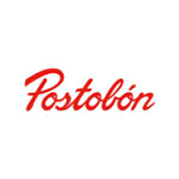Expand access to safe water through community partnerships
 Postobon
Postobon Cecodes
Cecodes总结
Community-driven program providing drinking water access, watershed conservation, and governance strengthening to promote long-term water security.
Context
Postobón, a leading beverage company in Colombia, faced challenges related to water scarcity and unequal access to safe drinking water in vulnerable communities, particularly near its production plants. Recognizing the importance of sustainable water management for both operations and society, the company developed a Water and Nature Management strategy with three pillars: efficient water use, resilience and adaptation to climate change, and water governance.
This strategy aligns with the company’s broader sustainability vision to safeguard ecosystems, enhance community well-being, and promote responsible water stewardship throughout its value chain.
Location of the Initiative: Colombia (nationwide, with key projects in Cauca, Bogotá, Antioquia, and Santander regions)
Solution
The company launched the “Liters that Help” (LQA) program in 2014, in partnership with the Postobón Foundation and the Colombian Red Cross. The program provides emergency and long-term drinking water access to vulnerable populations through infrastructure projects and community collaboration.
Over time, it evolved into a cornerstone of Postobón’s Water and Nature Management strategy, expanding from emergency response to long-term water security solutions.
Key actions include:
Delivering bottled water during emergencies such as floods and droughts
Installing and upgrading 63 drinking water systems, purification plants, and water storage tanks, directly benefiting more than 20,000 people
Partnering with local utilities and municipalities, such as the Caloto Public Services Company (Empocaloto), to expand aqueduct capacity, enabling 24-hour water access for over 8,000 residents
Engaging in watershed governance initiatives with water funds like Biocuenca, Agua Somos, and Cuenca Verde, supporting conservation and restoration efforts
Impact
Sustainability impact
Climate
While the program primarily addresses water access and governance, it indirectly contributes to climate adaptation and resilience. By restoring and conserving 29,484 hectares of key ecosystems and planting over 304,726 trees, it supports carbon sequestration and protects watersheds critical to climate regulation.
Nature
The initiative enhances biodiversity through conservation and restoration projects in strategic watersheds. Collaboration with organizations such as Corpopalo and the Río Palo Corporation has enabled the protection of habitats hosting species like the puma, ocelot, and the vulnerable Cabo de Hacha tree, strengthening local ecosystems.
Social
Social benefits are at the heart of the initiative. The program has:
Provided 837,512 liters of safe water to 424,208 people
Improved water security and public health
Enabled continuous education in schools previously affected by lack of clean water
Strengthened community capacity and governance for long-term resource management
Business Impact
Benefits
Strengthened social license to operate and improved relationships with local communities.
Enhanced operational resilience through improved watershed health.
Reinforced corporate reputation as a responsible water steward, aligning with ESG commitments.
Costs
While financial details are undisclosed, investments primarily include infrastructure (storage tanks, purification systems), conservation projects, and community engagement programs. Costs are minimized through partnerships with NGOs, government agencies, and water funds, leveraging co-financing and existing governance structures.
Implementation
Typical Business Profile
This initiative is most relevant for companies:
Operating in water-intensive sectors such as food and beverages
Located in regions vulnerable to water scarcity
Seeking to integrate social impact, ecosystem restoration, and water governance into sustainability strategies
Approach
Risk mapping: Identify and analyze watersheds that supply operational centers
Community engagement: Conduct participatory diagnostics to understand local water challenges
Collaborative planning: Define interventions (e.g., infrastructure, restoration, or governance)
Implementation: Deliver projects through partnerships with local organizations and authorities
Monitoring and evaluation: Track results on access, conservation, and capacity-building outcomes
Stakeholders Involved
Project Leads: Postobón Sustainability Department and Postobón Foundation
Partners: Colombian Red Cross, Empocaloto, local governments, and community associations
Supporting Organizations: Water funds (Biocuenca, Agua Somos, Cuenca Verde), Corpopalo, and Río Palo Corporation
Key Parameters to Consider
Initiative maturity: Established and scalable across regions
Implementation timeline: Ongoing since 2014 with continuous expansion
Average lifetime: Long-term with permanent community oversight
Technical prerequisites: Local water infrastructure, stakeholder coordination
Subsidies/Support: Co-financing through partnerships and funds
Implementation and Operations Tips
Foster multi-stakeholder collaboration early to ensure long-term ownership
Integrate social and environmental objectives to enhance resilience
Continuously monitor watershed health and adapt actions accordingly
Engage local communities in decision-making to build trust and sustain outcomes
